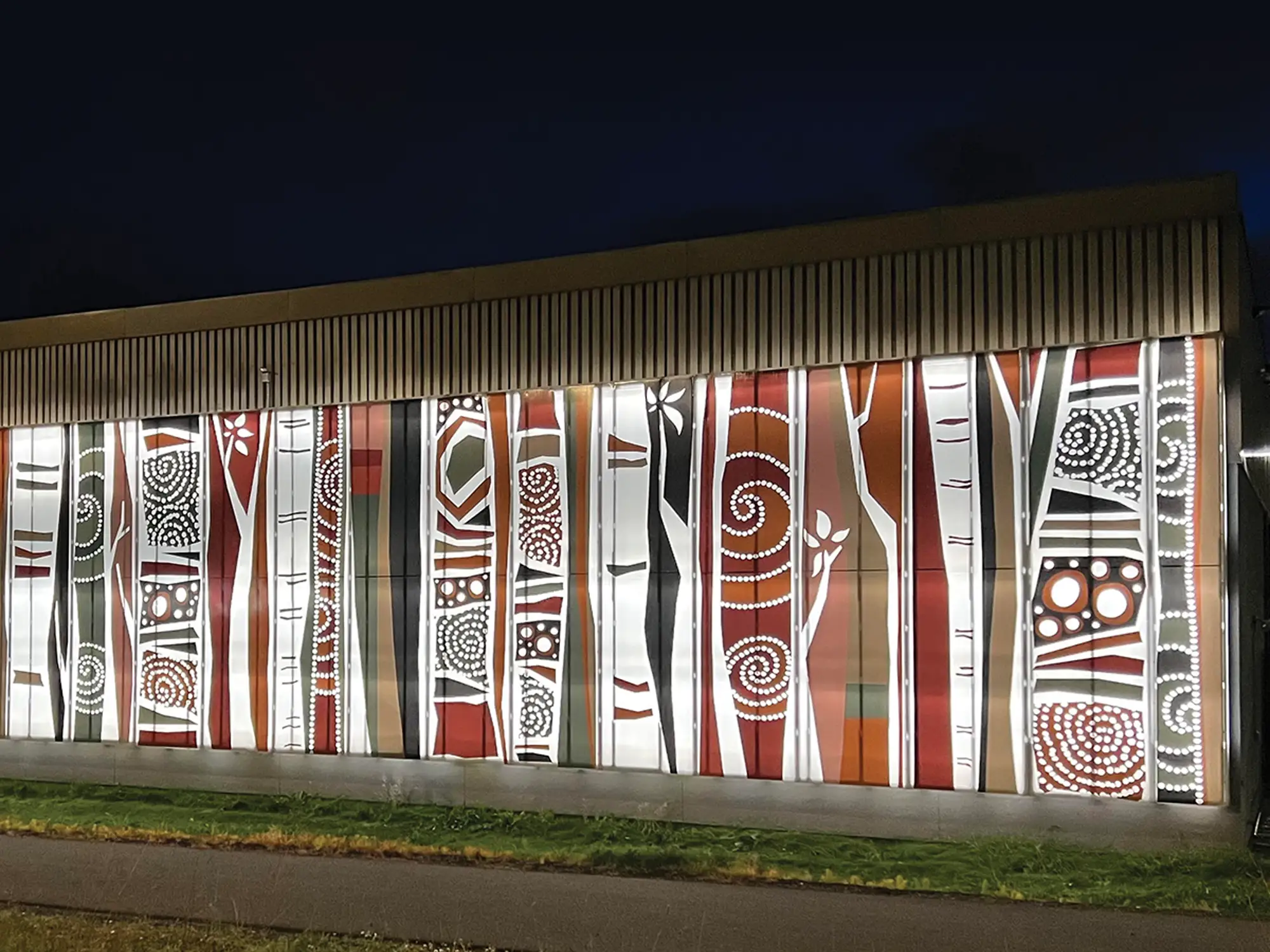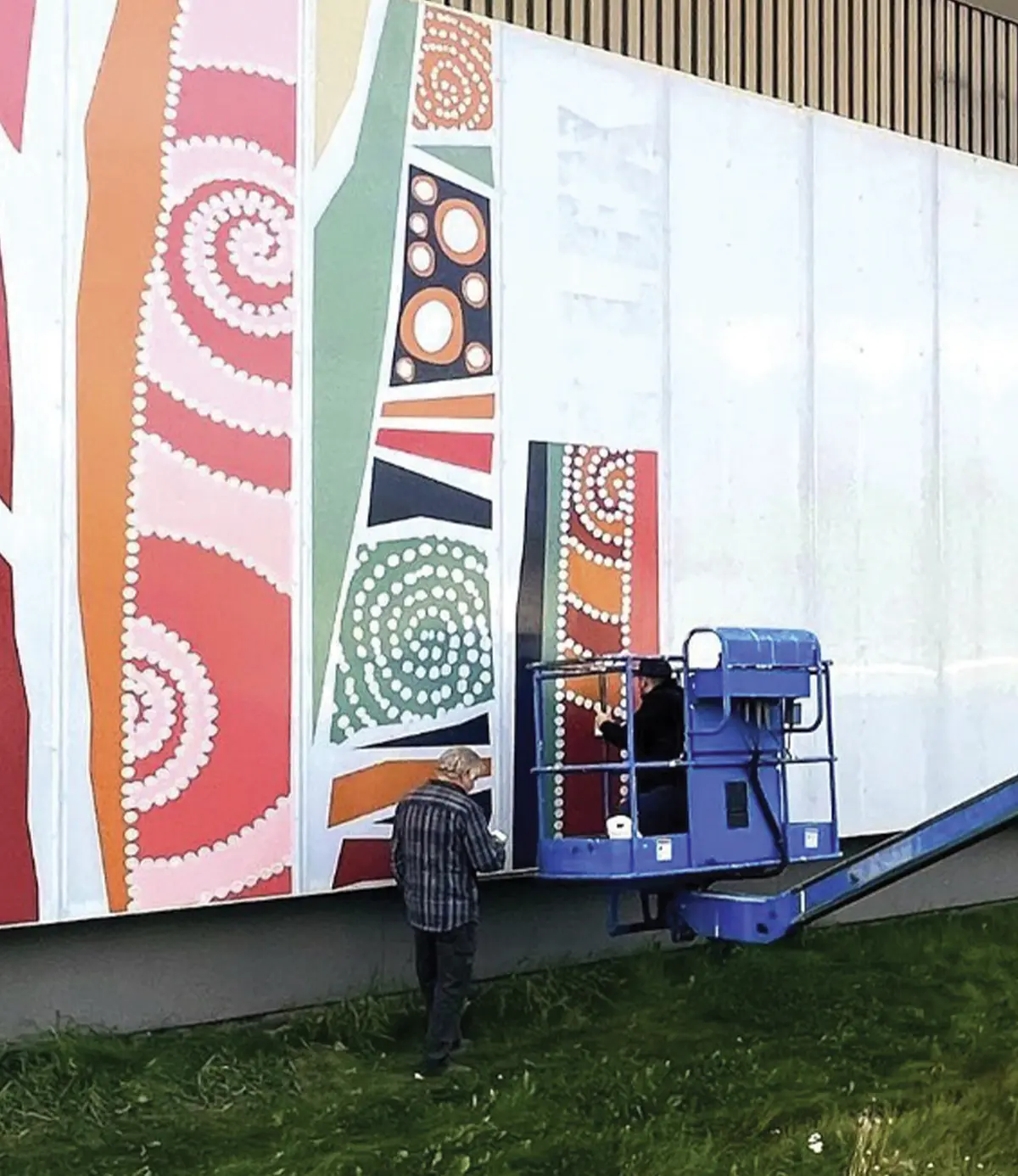
Anchorage Community Development Authority
ecret shoppers scouted Anchorage in the winter and summer of 2022. Posing as tourists or prospective residents, they evaluated the city for its attractions, amenities, ease of movement, and customer service.
Arizona-based consulting firm Roger Brooks International compiled the findings as the Anchorage Destination Assessment. The clandestine visitors had plenty of suggestions for improvement. The report included recommendations for better signage, more logical traffic patterns, and general municipal beautification.
To implement the recommendations, Mayor Dave Bronson empaneled the Project Anchorage Task Force. The group assigned priorities to changes that could be made right away. One of those low-hanging fruits is the Great Streets Façade Improvement Loan Program, now concluding its first year.
“That was what the façade program sprung out of,” says Mike Robbins, executive director of the Anchorage Community Development Authority (ACDA). “We latched on and said, ‘We can do this.’ We felt it was really important for Downtown that we add some dimension and help the small businesses downtown revitalize themselves. Our mission is to create economic activity. That’s our job.”
“When you look down your streets, you shouldn’t see flat buildings,” says Robbins. “You should see character. You should see dimension. And one way to do that is to improve the façades of businesses. The idea was [that] we know if we can make Anchorage a more appealing place for the people who live here, it will be more appealing to people who visit.”
ACDA, a municipal corporation, partnered with the Small Businesses Development Center at UAA to facilitate the Great Streets Façade program. It provides low-interest loans up to $25,000 to improve the appearance of building façades, with the goal of further stimulating private investment. Examples of qualifying work include exterior painting, re-siding, professional cleaning, restoration of exterior finishes, window and door repair or replacement, and installation or repair of exterior signage and lighting.

A pink eyesore when it was known as the McKay Building, the renovation of the McKinley Tower Apartments overcompensated into blandness. The owner plans to jazz up the exterior with some art.
Scott Rhode | Alaska Business

Proposed mural on Sixth Avenue.
Anchorage Community Development Authority

Proposed mural on Sixth Avenue.
Anchorage Community Development Authority

Thus, ACDA cast a wider net to also include businesses in Midtown and Muldoon. Robbins says Muldoon is a visible and important “in-between corridor. You come right off the highway and people zoom through it.” But visually, its main thoroughfare hasn’t changed much in years, if not decades.
Midtown has also emerged as an important economic area, with an eclectic vibrancy and many small, privately owned businesses, Robbins says. But, like Muldoon, it is also a static area in parts, with older, flat building fronts that could use sprucing up.
Business and building owners can combine funding to perform intended façade improvements. Program participants receive 75 percent of the loan up front, and the remaining 25 percent is paid when the project is complete.
A business property cannot have any open permits, and a qualifying business must be operating for at least two years, be a federally legal business (sorry, cannabis shops), and be in a commercial building.
“One of the neat things about the program is we also pay for design time,” Robbins says. “If you own a small business in one of these areas and you’d like to refresh your business or building and don’t quite know what to do, we pay for the first couple hours with the designer to get that process started. You can use your approved loan to pay for design time to finish the project if you want to. We have a list of designers who agreed to donate some time.”
Also covered under the loan program are exterior lighting, signage installation and repair, living or “green façade” walls, and murals.
Because the loan program started late in 2023, the only project finished before winter was the mural on Silverado Way.
Anchorage Community Development Authority

What was a drab, tan exterior wall of a blocky warehouse was transformed by a paneled mural by Girdwood artist Dawn Gerety. Warm tones of red, tangerine, peach, and olive reveal a creative display of birch trees, with a stunning backlit presentation after sunset.
“We’re really proud of that one,” Robbins says. “They basically took a warehouse and they lit the whole side of it with birch trees. The artist from Girdwood designed it—it’s fantastic!”
Other work supported by the program that is forthcoming includes funding for a total exterior overhaul at a combined bingo and daycare facility at Arctic Boulevard and Northern Lights.
“They haven’t finished design, and we haven’t finalized it, but they will basically be redoing the whole façade,” Robbins says. “Our funding spurred them to spend their money on the work. When they submitted their application, they said, ‘You were the catalyst that pushed this over for us and made us say, let’s do this.’”
Murals are one of the easier pieces of work to design and install, Robbins says. A project in development is planned for one of Downtown’s most iconic structures, the McKinley Tower Apartments, long known as the McKay Building, a historic high-rise on East Fourth Avenue designed in 1950. Notoriously pink until it was refurbished in 1998, the fourteen-story building has sported a more humdrum exterior since then.
“Can you imagine that?” Robbins says. “I’m not saying the McKay Building isn’t a great building, but it’s been the same color for a long time, and the owner is going to put this art on the side of the building that’s going to be incredible.”
Another planned mural would display the Chugach Range on the old Roscoe’s Catfish and Barbecue on Sixth Avenue. “That whole side will be an artist rendering,” Robbins says. “Very contemporary and cool.”
Robbins notes that some downtown bars are seeking funding for exterior improvements that “make the building not feel so blank. We’re pretty excited about it. I think you’ll start to see those improvements as we roll into the spring.”
“Our goal was to push the money out,” Robbins says. “After talking to people who applied, we realized [that] if we increase the size of the loans, the money would get pushed out sooner.”
ACDA anticipates a flurry of activity this spring, with more loan applications and more funded projects coming to fruition.
Originally, ACDA and UAA both contributed $500,000 for a combined loan pool of $1 million. After the first round of loans are disbursed, both entities are prepared to contribute $1 million more to double the potential impact, Robbins says.
“The funding at that point will start to be self-sustaining because as the loans get paid back, we can reinvest it in the program so more people can take advantage of it,” he says.
Another regenerative aspect is that, as businesses improve themselves, they motivate neighbors to do the same.
“As you fix up one business in the area, what always happens is that ‘keeping up with the Joneses,’” Robbins says. “You don’t want that business to look good and yours to look marginal next to it. People will say, ‘Wow, that looks great,’ and talk and develop that momentum. Our job at ACDA is to cause action and stimulate. The small business owners are the backbone of our economy, and we need to make sure they get the support they need.”
“Not only does this generate jobs, it stimulates business, and it makes people feel better about Anchorage because businesses are fixing themselves up,” he says. “When you go into a city with activity, you feel good about it. Roger Brooks said [to]focus on the people who live here, not the people who want to come here, because if the people who live here enjoy Anchorage, the people who come here will enjoy Anchorage.”
The cyclical and constant practice of revitalizing Anchorage is ACDA’s mission. While the Great Streets Façade Improvement Loan Program is just one project in play toward that effort, it’s a visible and important one, and a campaign that excites Robbins.
If it succeeds, he can enthusiastically express what that looks like down the road.
“It looks like several million dollars invested, loaned, and paid back,” Robbins says. “It looks like help for small businesses in the city—maybe twenty-five or fifty building owners. I want to be able to drive down the street in Midtown, Muldoon, and Downtown and say, ‘Yes, that was one of our buildings, that was one of our businesses.’ That’s the vision for ten years from now.”